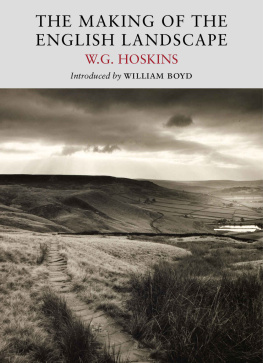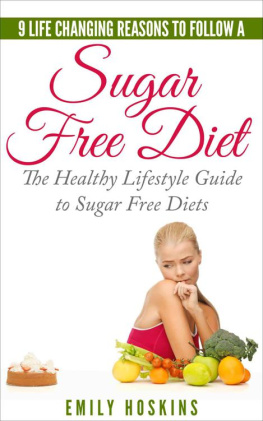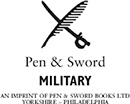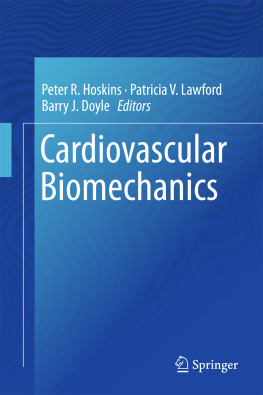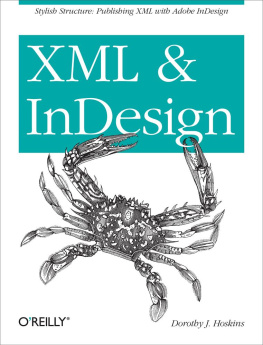Hoskins - The Making of the English Landscape
Here you can read online Hoskins - The Making of the English Landscape full text of the book (entire story) in english for free. Download pdf and epub, get meaning, cover and reviews about this ebook. year: 2014, publisher: Little Toller Books, genre: Art. Description of the work, (preface) as well as reviews are available. Best literature library LitArk.com created for fans of good reading and offers a wide selection of genres:
Romance novel
Science fiction
Adventure
Detective
Science
History
Home and family
Prose
Art
Politics
Computer
Non-fiction
Religion
Business
Children
Humor
Choose a favorite category and find really read worthwhile books. Enjoy immersion in the world of imagination, feel the emotions of the characters or learn something new for yourself, make an fascinating discovery.
The Making of the English Landscape: summary, description and annotation
We offer to read an annotation, description, summary or preface (depends on what the author of the book "The Making of the English Landscape" wrote himself). If you haven't found the necessary information about the book — write in the comments, we will try to find it.
Hoskins: author's other books
Who wrote The Making of the English Landscape? Find out the surname, the name of the author of the book and a list of all author's works by series.
The Making of the English Landscape — read online for free the complete book (whole text) full work
Below is the text of the book, divided by pages. System saving the place of the last page read, allows you to conveniently read the book "The Making of the English Landscape" online for free, without having to search again every time where you left off. Put a bookmark, and you can go to the page where you finished reading at any time.
Font size:
Interval:
Bookmark:
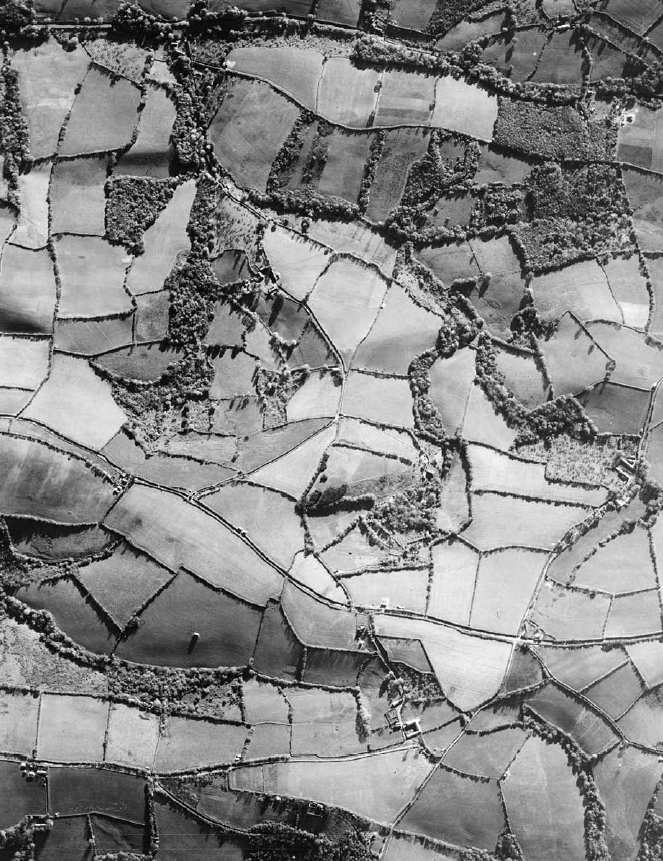
The Making of the
English Landscape
W.G. Hoskins
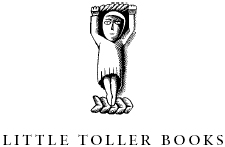
This edition published in 2014 by Little Toller Books
First published in 1955 by Hodder & Stoughton
Text The Estate of W.G. Hoskins 2013
Introduction William Boyd 2013
ISBN: 978-1-908213-96-9
We have made every effort to trace the copyright-holders of the plates listed on pages 283-287; in the event of an inadvertent omission or error please notify Little Toller Books
Contents
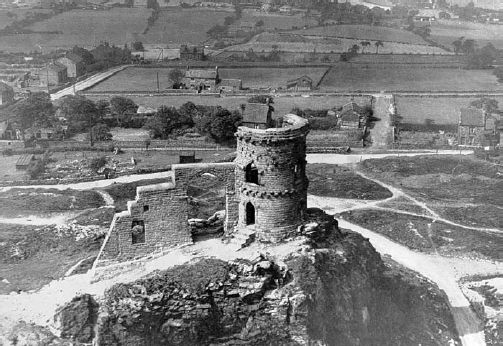
Introduction
William Boyd
I T WAS MY LOVE for the poetry of W.H. Auden that led me to The Making of the English Landscape by W.G. Hoskins. Auden revered Hoskins book and I thought that anything that could stimulate Audens vastly learned though somewhat ramshackle mind had to be checked out. And I wasnt disappointed. Veils were stripped away as I read the book and I started looking around me at whatever landscape I happened to be in with new intensity, new insight.
One has to indulge in something of a thought-experiment when reading Hoskins book today. It was published in 1955 and it was an absolute trailblazer, a revolution. There had been a centuries long tradition of topographical writing in English literature but with the publication of The Making of the English Landscape (lets call it Landscape for short) a new discipline was born landscape history. The familiar English countryside, in whatever regional variation, became a form of historical palimpsest its evolving history there to be decoded and discerned for those who could look at it through the innovative lens that Hoskins provided. It was as if the landscape were, all of a sudden, an archeological dig hills and dales, woods and copses, fields and rivers, villages and roads ceased to be simple features of a view components of a rustic panorama instead the whole history of English humankind and husbandry was on display, from the Holocene age to the latest horrors of agribusiness. And the book in which that history was written was the very land itself.
Landscape history or landscape archaeology, or historical ecology had become a new area of study but Hoskins book, it can be fairly said, was its inaugurating monument. Not only was it revelatory, it was also written in a prose style that displayed the virtues of vigorous and evocative English. Theres nothing vague or woolly about Hoskins descriptions the precise verities of our language and its range and colour inform these pages whether Hoskins is describing the workings of a medieval watermill or trying to paint a broader picture of the landscape as it was discovered by various changing populations. Here he is on post-Roman Britain: The great majority of English settlers faced a virgin country of damp oak-ash forest, or beech forest on and near the chalk; and what was not thickly forested was likely to be cold, high mist-wrapped moorland, or water-logged wet heath, drowned marshes or estuary saltings, or sterile, thin-soiled dry heath. One suspects that this precision of language was also what Auden was responding to when he read the book.
At the time I read Landscape in the early 1980s I was renting a cottage in the village of Over Norton in Oxfordshire. Over Norton was perched on a small hill above Chipping Norton, and a brief walk out of the village took you onto a bluff where you looked out into and over an archetypal English landscape. Gently undulating hills framed a long valley with, running along it, the curving embankment of a disused railway built in the nineteenth century, closed by Dr Beeching in the twentieth and on either side were hedge-rowed fields, small woods and copses, farms and their steddings. At the foot of the valley immediately facing you was an ancient Norman church, St Philip, and its rectory dating back to the seventeenth century. And beyond, on the crest of the hills opposite, just off the road between Great Rollright and Oddington, was the megalithic circle of the Rollright Stones, 100 feet in diameter, legacy of Englands ancient pre-Roman past. In fact almost every historical chapter of Hoskins book was laid out before you in that view as if in some sort of vast rural model. You could walk, over the course of a mile or two, through centuries of Englands history. The knowledge supplied by Hoskins book now revealed the secrets of the landscape around you. What initially had seemed a stereotypically charming Cotswold scene became gravid with meaning and replete with markers of the remorseless passage of time. A landscape would never be the same.
I suspect this is the great legacy of Hoskins masterwork. He started a movement that has continued with increasing vigour even though, like many an initiator, he has been somewhat outstripped by his successors. Hoskins inevitably made some errors in this preliminary study. He greatly underestimated, for example, the extent of Mesolithic forest clearance and woodland management and his vision of a pristine, densely forested England in the fifteenth century is some thousands of years out of date. Its of little consequence and does not detract from the tremendous groundbreaking work that Landscape established.
In my own case reading Hoskins stimulated an amateur interest in landscape history that persists to this day. Since Hoskins, I have gone on to read and savour many books of landscape history, particularly those of Oliver Rackham, Hoskins great successor. Indeed Rackhams The History of the Countryside (1986) is in many ways the perfect example of what Hoskins revolution created. Hoskins opened the door and Rackham and others followed through with their own particular zeal and armed with the analytical weapons of modern research and scholarship.
A more pertinent sign of my new enthusiasm became evident when I made the central character of my novel, Brazzaville Beach (1990), a landscape archaeologist. Before she becomes a primatologist, my protagonist, Hope Clearwater, starts her scientific life in Dorset where she dates hedgerows to distinguish ancient landscape from more modern planned landscape using a method I gleaned from a wonderful book called Historic Landscape of Weld Estate (1987 edited by Laurence Keen and Anne Carreck). This meticulous analysis of a small country estate near Lulworth shows in microcosm everything that Hoskins initiated in his trailblazing study. Where Hoskins looked at the large view of landscape history, of irrepressible geo-historic movements, of the comings and goings of peoples, of acts of parliament, of the power of aristocratic taste, of technological advances, the writers in Historic Landscape of Weld Estate showed how Hoskins vision could be focussed tightly on the most banal and insignificant of details on cart tracks and water meadows, on coppiced woods and ancient hedgerows. Through careful observation and notation each apparently mundane facet of the landscape could reveal its complex history the sudden corner in a lane, the abundance of hazel or the absence of elder, the width of a ditch, the height of a bank were all clues to the never-ending story of the land. The fascination endures, Im happy to say, but it all started with my Auden-inspired reading of W.G. Hoskins wonderful book, The Making of the English Landscape.
William Boyd
London, 2013
Introduction to
the First Edition
Font size:
Interval:
Bookmark:
Similar books «The Making of the English Landscape»
Look at similar books to The Making of the English Landscape. We have selected literature similar in name and meaning in the hope of providing readers with more options to find new, interesting, not yet read works.
Discussion, reviews of the book The Making of the English Landscape and just readers' own opinions. Leave your comments, write what you think about the work, its meaning or the main characters. Specify what exactly you liked and what you didn't like, and why you think so.

